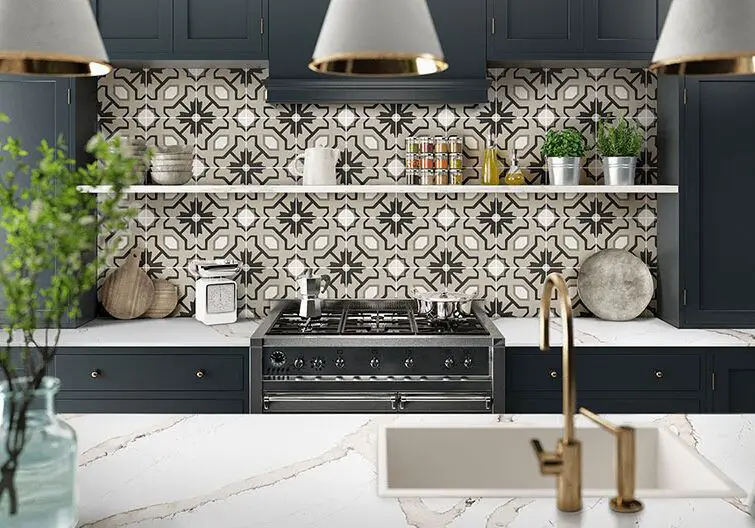What Is The Best Height Bowl For A Dog?
The height of a dog’s food and water bowls is an important consideration for their health and comfort. Choosing the right height bowl can help prevent neck, back, and joint issues as well as making mealtimes easier for your dog. Selecting the proper bowl height depends on several factors including your dog’s size, breed, and age.
Elevated bowls or raised feeders are designed to bring your dog’s food and water closer to shoulder level, which encourages a natural and comfortable eating position. Dogs that eat and drink from bowls that are too low on the ground have to bend their necks downwards, which can lead to muscle strain. Conversely, bowls that are too high can also cause discomfort. Having the correct bowl height eliminates excess bending and reaching, protecting your dog’s joints and spine.
In this article, we’ll discuss the optimal height ranges for bowls based on your dog’s size and body type. Understanding the ideal bowl height for your pet will help ensure they can eat and drink comfortably at every meal.
Bowl Height and Neck/Back Strain
The height of a dog’s food and water bowl can have a significant impact on their neck and back health. Bowl height that is too high or too low forces a dog to bend their neck down or up in an unnatural position when eating and drinking. This repetitive strain on the neck can lead to muscle fatigue and pain over time.
Veterinarians often recommend elevated bowls for larger breed dogs as a way to prevent back and neck issues. According to one source, “An elevated dog bowl can help ease the strain on your dog’s shoulders, neck and back by providing a more comfortable eating and drinking position” (https://www.dfordog.co.uk/blog/raised-dog-bowls-pros-and-cons.html). The proper height bowl reduces the amount of bending and stretching required for a dog to reach their food, keeping the back and neck in better alignment.
On the other hand, bowls that are too low can cause dogs to excessively lower their necks when eating and drinking. This repetitive motion can put strain on the neck, shoulders, and upper back. Choosing a bowl at the proper height is important to minimize risk of muscle and joint problems over time.
Breed Size Considerations
The ideal bowl height differs significantly between dog breeds of different sizes. This is because larger dogs have longer necks that require a higher bowl height to maintain a comfortable and natural eating position. Small dogs have much shorter necks and require a much lower bowl height.
For small dog breeds under 20 pounds, such as Chihuahuas, Pomeranians and Toy Poodles, a bowl height of just 2-4 inches is recommended (Pet Junkie). This allows them to reach their food without excessive bending or stretching of their neck and back.
Medium dog breeds between 20-60 pounds, like Beagles, Border Collies and Cocker Spaniels, need a bowl height of 6-8 inches. This provides an optimal neck position while eating (Official Dog House).
For large breeds between 60-100 pounds, such as Labradors, Golden Retrievers and German Shepherds, a height of 10-15 inches is ideal. Their long necks require high-raised bowls to prevent strain (Pawaii).
Finally, giant breeds over 100 pounds, including Great Danes, Mastiffs and St. Bernards, need their bowls to be 15-20 inches high. This allows these extra large dogs to reach their food comfortably (Pawaii).
Risk of Bloat
One potential risk with using elevated bowls is an increased chance of bloat, especially in large, deep-chested dog breeds. Bloat is a life-threatening condition where the stomach fills with air, fluid, or food, causing it to distend and potentially twist. This can cut off blood flow and cause shock, tissue damage, and death if not treated quickly.
Some research, such as a 2000 study by Purdue University, found a strong correlation between using raised feeders and an increased risk of bloat in large breed dogs. The study found that dogs fed from a raised bowl were 2.2 times more likely to develop bloat compared to dogs fed from bowls on the floor. The risk was significantly higher in larger breeds with deep chests, like Great Danes, St. Bernards, and German Shepherds.
The exact reason why elevated bowls may increase bloat risk is not fully known. One theory is that eating from a raised bowl causes dogs to swallow more air while eating, potentially leading to more trapped gas and bloating issues. However, more research is still needed to fully understand the connection.
Due to these potential risks, many vets caution against using raised bowls for high-risk, large breed dogs. Owners of these breeds should consult with their vet before elevating food bowls.
Ease of Access
Easy access to food and water is particularly important for puppies and senior dogs. Puppies have smaller, weaker necks and less developed muscles, which can make leaning down into bowls on the floor challenging and uncomfortable. This strain on their neck and back could hamper development.
As dogs age, they often develop arthritis and other mobility issues that make bending down to floor level bowls difficult and painful. Senior dogs may give up eating and drinking rather than feel this discomfort. Providing elevated bowls can make mealtimes easier and more pleasant for aging pets.
According to one source, “Older dogs often benefit from elevated food bowls, which place less strain on the back and joints,” (The Correct Height for A Dog Food Bowl). Elevated bowls at the proper height allow puppies and seniors to maintain a neutral neck and back position while eating and drinking.
Single vs Raised Feeding
There are pros and cons to using single bowls on the floor versus raised feeders for dogs. Some key considerations include:

Pros of Single Bowls
- Typically more affordable option
- Allows dogs to eat in a natural position if the bowl height is appropriate
- Easy to find bowls that fit breed size and preferences
Cons of Single Bowls
- Dogs may need to strain neck to reach floor-level bowls, depending on size
- Increased risk of ingesting debris or contaminants
- May contribute to bloat in large, deep-chested dogs
Pros of Raised Feeders
- Elevates food to reduce neck strain
- May aid digestion
- Keeps dogs’ ears out of food
- Can slow eating to prevent bloat
Cons of Raised Feeders
- More expensive than single bowls
- Improper height could still strain neck
- Dogs may be uncomfortable using at first
- Can tip over if not sturdy or properly sized
There are good options in both single and raised dog bowls. Consider your dog’s size, breed, age, joint health, and eating habits when deciding which may be best for your pet.
Material and Design
When choosing a dog bowl, one of the most important considerations is the material it’s made from. Here are some of the most common materials used for dog bowls:
Stainless Steel – Stainless steel bowls are durable, easy to clean, rust-resistant, and nonporous. This prevents bacteria growth which can cause acne around their mouth. Stainless steel is also less likely to harbor smells than plastic. Grades 304 and 316 are food-safe options. According to https://dogspotted.com/as-told-by-a-vet-the-best-dog-bowls-for-your-dog/, stainless steel is one of the safest and most recommended materials by vets.
Plastic – Plastic bowls are affordable and come in many colors and designs. However, lower quality plastic can harbor bacteria and scratches over time. Ensure the plastic is BPA-free. Plastic is also more prone to staining and holding onto smells. For optimal safety and hygiene, look for high-density polyethylene (HDPE) or polypropylene plastic.
In terms of design, look for a bowl with a wide, flat base that won’t easily tip over. The rim should be rolled or smoothed for safety, without any sharp edges that could hurt your dog’s nose or mouth. Non-slip rubber on the bottom prevents sliding. For ease of cleaning, choose a simple smooth design without crevices.
The optimal material and design depends on your dog’s needs and preferences. Stainless steel offers the best durability and hygiene. But plastic can work well for travel bowls or less messy dogs. Focus on safety, ease of cleaning, stability, and accessibility.
Measuring Your Dog
To determine the ideal bowl height for your dog, you’ll need to measure your dog’s height. Here is how to properly measure your dog:
1. Have your dog stand comfortably on a level surface with their front legs straight and paws flat on the ground. Their back should be in a natural position, not hunched or stretched.
2. Using a soft measuring tape, measure from the floor to the top point of your dog’s shoulder blades. This is the withers, the highest point of the shoulders where the neck meets the back.
3. For accuracy, repeat this measurement a few times and average the results. Make sure your dog remains still while measuring.
4. Record this measurement in inches/centimeters. This is your dog’s height at the withers.
5. Use this measurement to determine the ideal bowl height based on general guidelines (explained more in the following sections). Measurements can vary day to day so you may want to take new measurements every few months as your dog grows and ages.
Properly measuring your dog while standing provides the most accurate measurement for ideal bowl height. Consult with your veterinarian if you have any questions.
Recommendations by Breed
The ideal bowl height can vary based on your dog’s breed. Here are some specific height recommendations for popular breeds:
Small breeds like Chihuahuas, Pomeranians, and Toy Poodles do best with bowls set at a height of 4-6 inches. This allows them easy access without excessive bending or straining their necks.
For medium breeds such as Cocker Spaniels, Beagles, and Bulldog mixes, aim for a bowl height of 6-8 inches. This puts food within comfortable reach.
Larger breeds including Labrador Retrievers, German Shepherds, Golden Retrievers, and Boxers need bowls set at 10-15 inches high. This reduces strain on their backs and necks during mealtimes.
Giant breeds like Great Danes, Mastiffs, and Saint Bernards require extra tall bowls around 15-20 inches high. This allows them to eat comfortably without excessive bending of their large frames.
For very large or giant breeds prone to bloat like Great Danes or Irish Wolfhounds, consider using a specially designed slow feed bowl placed at the ideal height to minimize risk.
While these height ranges provide a good starting point, always measure your individual dog and adjust accordingly for maximum comfort and health.
Conclusion
When selecting the optimal height for your dog’s bowl, there are several important factors to consider. The height should allow your dog to eat comfortably without straining their neck or back. Breed size makes a difference, with larger dogs generally needing elevated bowls and smaller dogs doing fine at ground level. You’ll also want to consider your dog’s individual risk for bloat, ease of access, and whether you use single or raised feeding stations. The material and shape of the bowl can also impact comfort. Take some measurements of your dog to gauge the ideal height. Different breeds have varying recommendations based on their size and shape. The goal is to choose a bowl height that allows your dog to eat and drink comfortably, while minimizing the risk of joint strain or dangerous conditions like bloat. With a little thoughtfulness and observation of your individual dog, you can provide them with a bowl at just the right height for their needs.




